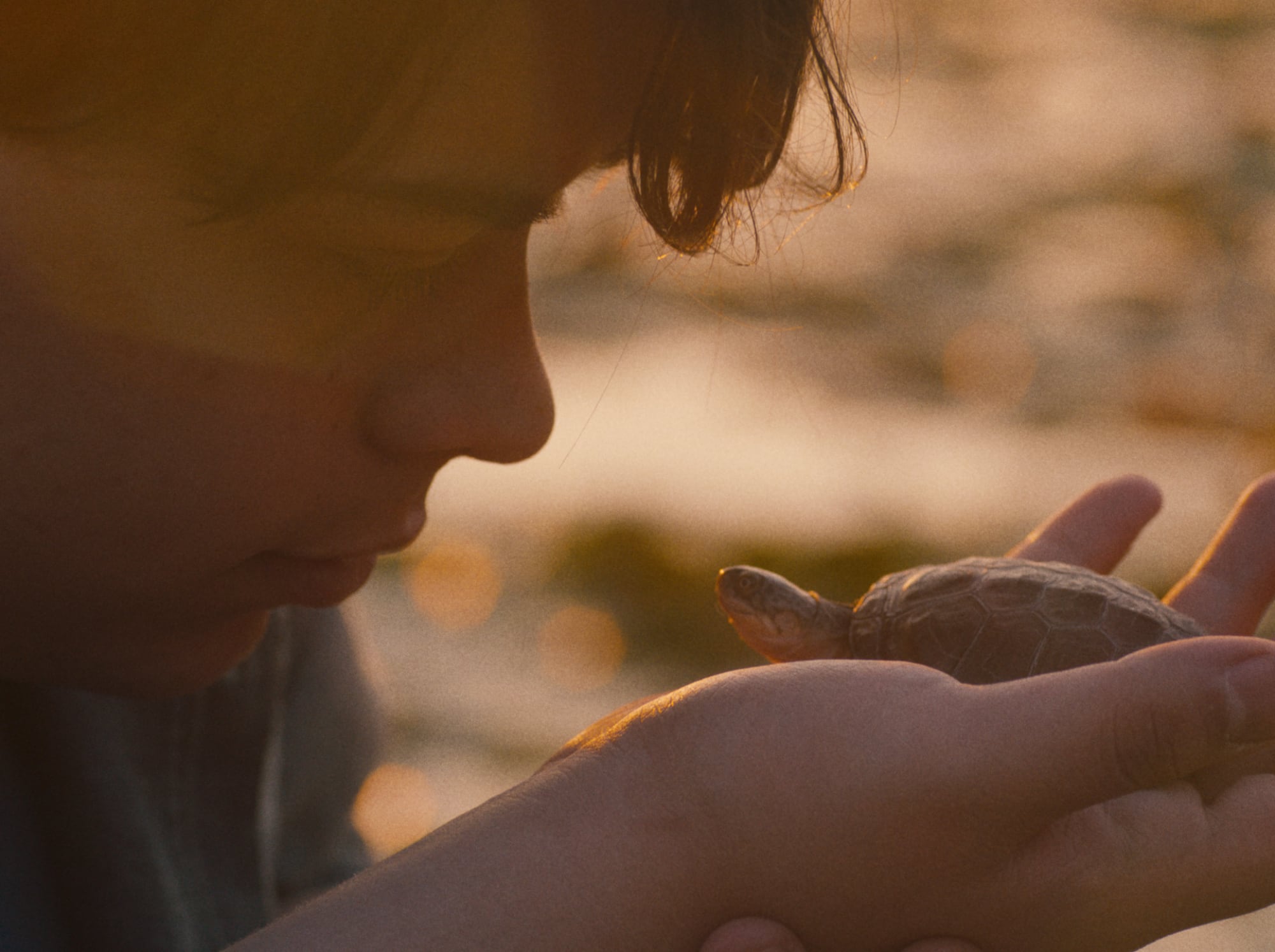
Writer/Director Jerome Yoo took his cloistered feelings of stifled creativity and claustrophobia from the pandemic and poured them into the creation of his idiosyncratic short River Boy Blues. Inspired by an old folk tale, with injections of fantasy and an improvised approach to production, River Boy Blues follows a troubled teen couple on an outlandish trip to find a happy home for a pet turtle. Their relationship is far from ideal and nothing in this selfish pair’s path seems planned but this chaos is as delightful as it is confusing. Yoo overcame the restrictions of a small crew and limited resources by adopting a guerilla shooting style which echoed his continually adaptive approach to the film’s script. As River Boy Blues premieres on DN’s pages today, we speak to Yoo about the freedom he found in his less structured production process, the procedures put in place to work with a live turtle on set and why he felt drawn to inject flashes of folklore and fantasy into the film.
Where did the concept for this delightfully quirky story originate?
River Boy Blue was inspired by the Japanese folk tale of the Kappa, a semi turtle-human looking creature, obsessed with cucumbers. I’m fascinated by mythology and other cultural stories pertaining to the strangeness in the world, so I’ve often found myself approaching my own narratives with this influence. The creative suffocation I faced during the summer of 2020 also instinctually pushed my writing towards releasing my pent-up emotions towards chaotic and selfish characters, which is reflected in the relationship between Ruben and Sooze.
Isaiah Lehtinen, who plays Ruben, and I had been mutually expressing our wish to collaborate, and during an initial meeting with director of photography, Jaryl Lim, I sensed an immediate synergy, discussing our ethos towards visual storytelling. We were all craving a creative output, but with pandemic conditions just starting to ease, and no budget, we felt handcuffed. But, where there’s a will, there’s a way. I went back to rule number one, the most important rule of independent filmmaking: What is available to me for free? After a day of brainstorming every possible resource available to me (including approaching friends in the herpetology community for turtles) and discussing the scope of what was possible in terms of crewing with my producers, Tesh Guttikonda and Arnold Lim, my mind went to work using these pieces to develop the blueprint script for River Boy Blues.
I was excited to explore a guerilla style of filmmaking and the spirit of improvising for the moment.
How did the limited resources at your disposal shape the production?
I call the script a blueprint as it was completely flexible and we were willing to revise it to adapt to the conditions we were given. Pre-production was a game of flexibility and adaptability. As a matter of fact, I was excited to explore a guerilla style of filmmaking and the spirit of improvising for the moment. Preparing with my actors was exciting as I gave them lots of creative authority and the opportunity to experiment during our rehearsals in order to workshop the script further. We even went thrift shopping together for their costumes. Then came the intriguing aspect of working with our live turtle. As we were very sensitive to any action that would be a health risk or detriment to the turtle, we were meticulous in our shot selections. The prop building genius, Ben Plante, was able to create a 1:1 replica figure of the turtle that would be used in any shots with movement from the actors.
Production was a three day adventure running around filming in the beautiful geographies Victoria on Vancouver Island had to offer. The crew of four were essentially a Swiss army knife as I was directing-set decorating-costuming, my DP the entire camera/LX department, and my producers, location scout-turtle babysitter-crafty-onset sound, etc. Despite the chaos of needing to perform up to the standard of multiple positions, the set experience felt intimate, as it was a rare circumstance where we were not pressured by working hours, only the threat of losing daylight and scenes. It was especially ideal in my process with my actors as the intimacy fostered a theater-like atmosphere, allowing them to be more vulnerable and receptive to my direction.
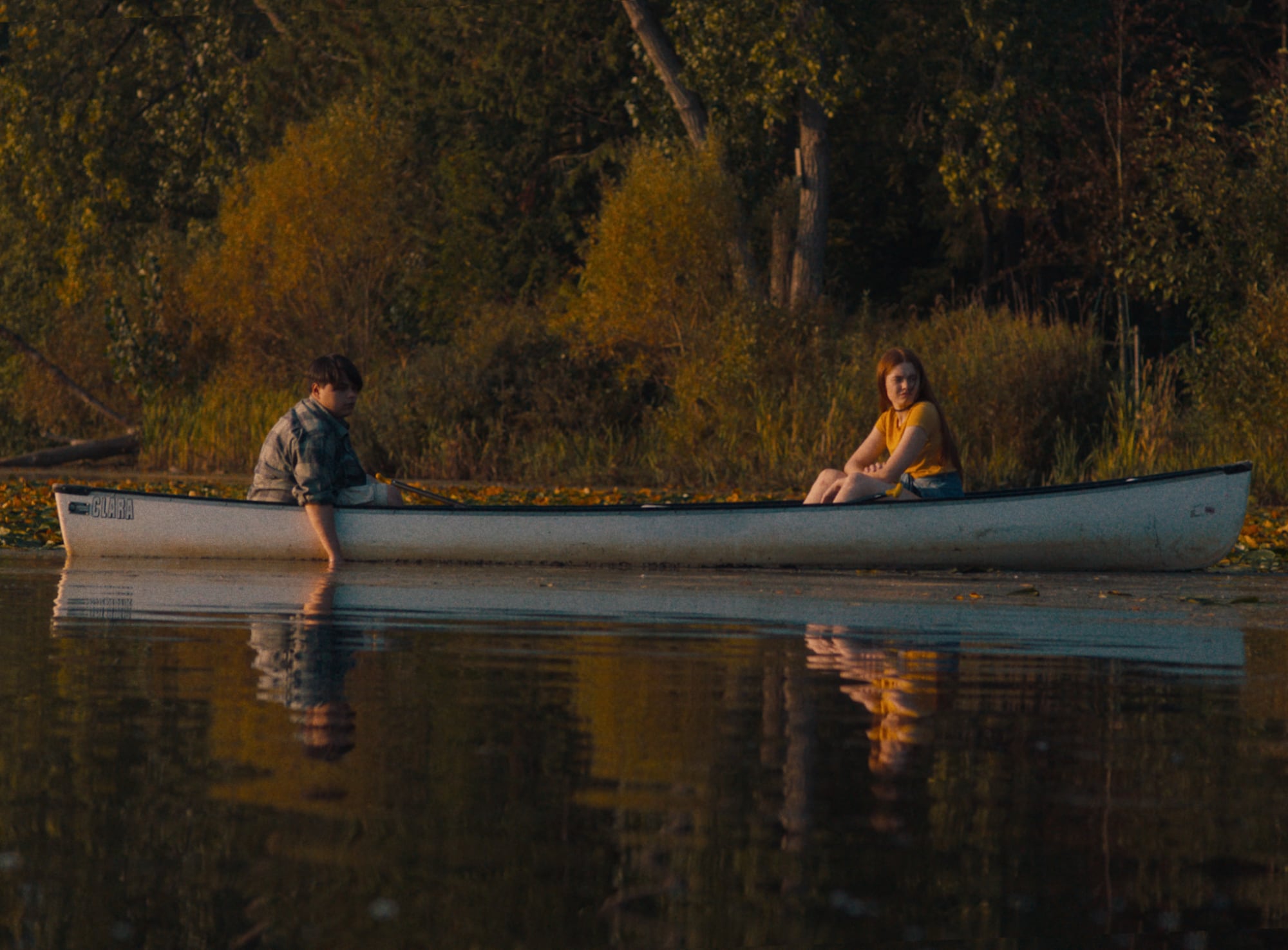
How did you approach writing Ruben and Sooze to show us the depth of their characters even in their youthful exuberance?
Ruben and Sooze are troubled youths bound to one another only to indulge in momentary pleasures and satisfactions in life. I felt suffocated and consumed by life’s mundaneness during the coronavirus pandemic when I wrote the script, so I hoped to build the story around characters without any filters that could wreak manic energy on screen. I approached the writing of the characters by honing in on what I imagined would stir up maximum chaos in a young, fragile relationship. I often find myself gravitating towards exploring characters still developing the limitations and range of emotions during their youth. There’s a sense of freedom in writing such characters as they can be motivated by reasons beyond logic or comprehension. The dichotomy of how first love can make you feel high off euphoria or utterly destroyed from the pain of losing it. Fresh experiences and sensations are emotionally overwhelming and I love exploring how far I can stretch my characters with it.
I often find myself gravitating towards exploring characters still developing the limitations and range of emotions during their youth.
Isaiah Lehtinen and Brenna Llewellyn elevated the River Boy Blues titular characters. I’m so grateful to have worked with actors who are rigorous in their process and craft, especially in a demanding, hands-on collaboration. After tapping into their characters, it took little time for us to share ideas and expand on the script. And of course, it helped that they naturally exude colorful and charismatic personalities in real life, which was effortlessly imbued into the characters.
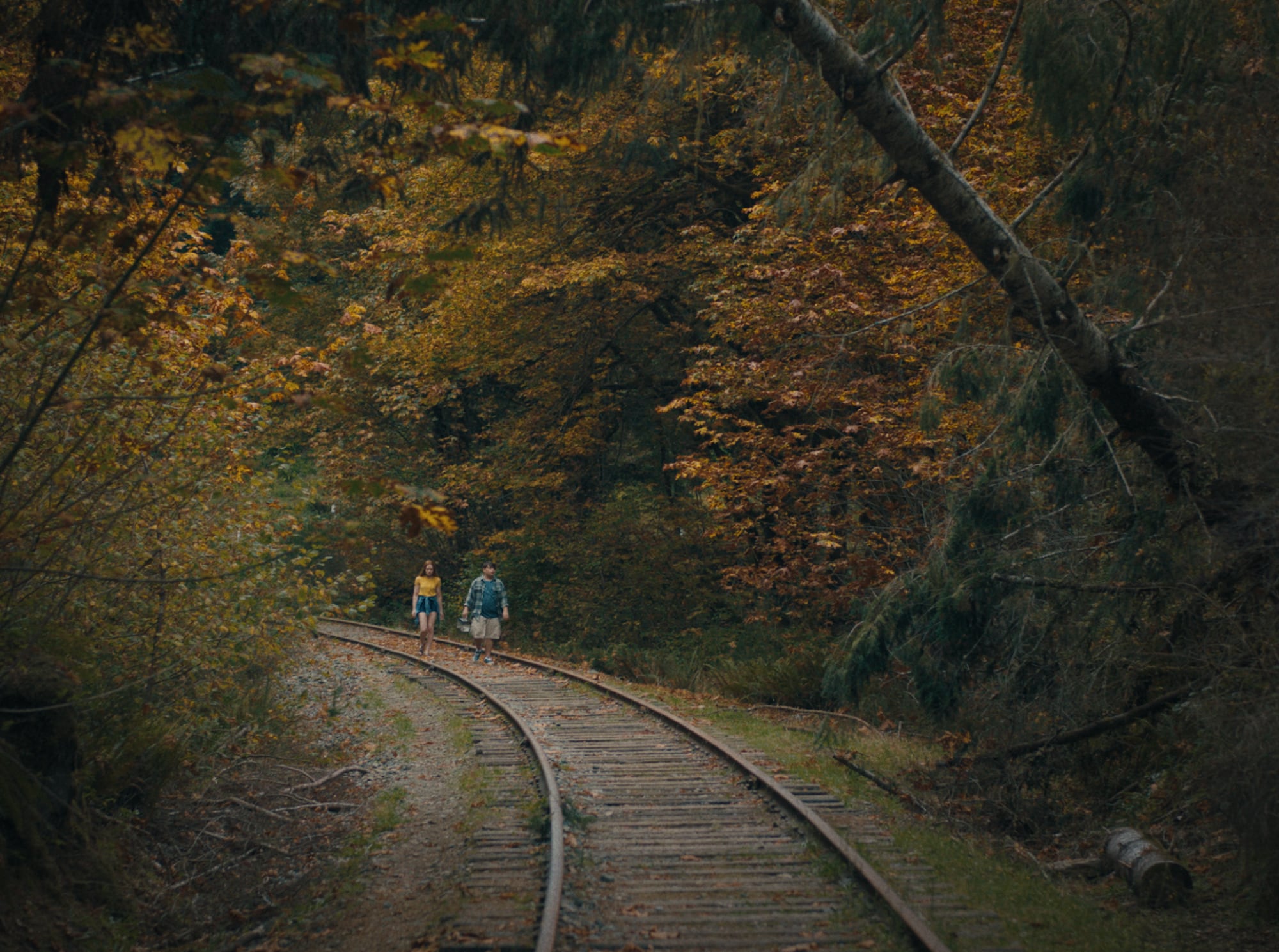
It feels like the freedom with which you approached the script directly translates into the abandon we experience watching the film.
I typically enjoy precision in my writing however I wanted to experiment and embrace an open approach in actively allowing the story to evolve through collaboration. The first draft of the script was hastily written, some scenes only conveying summarized beats to serve as a blue-print for the team’s collective imagination. To my actors I wanted to emphasize the flexibility to improvise dialogue and blocking. This led to active participation from the actors to suggest ideas or take more risks than usual to push the boundaries of their characters or the scene without consequence. It felt intimate like workshopping a scene in a black box theater. I would like to think this approach allowed us to be bold, spontaneous and think outside the box.
To evoke the chaotic dynamic of the two teenagers, shooting handheld was an instinctual choice to lean into.
The handheld camerawork is so integral to the chaotic feeling of the day. As production was fairly loose, how did you make sure you had the right coverage, for example, the scene in the forest seems meticulously planned.
Inspired by the works of Andrea Arnold, and Xavier Dolan who have presented characters in a suffocating 4:3 (and smaller) aspect ratio, handheld felt like the natural choice to capture our characters’ frenetic energy to ooze from the frame. Our director of photography, Jaryl Lim, is responsible for accentuating the chaos as he has a keen eye and sensitivity in adapting camera movement based on the actor’s performance. We shot on an Alexa Mini lensed with Zeiss Super Speeds chosen for both technical and artistic intentions. To evoke the chaotic dynamic of the two teenagers, shooting handheld was an instinctual choice to lean into, while locking off camera with the tripod to establish them in the diverse environments of the northwest coast. The lenses imbued a wonderful softness to our actors’ portraits, whilst allowing camera operating manoeuvrability with its small size, and efficiency to swap without the aid of any camera assistants.
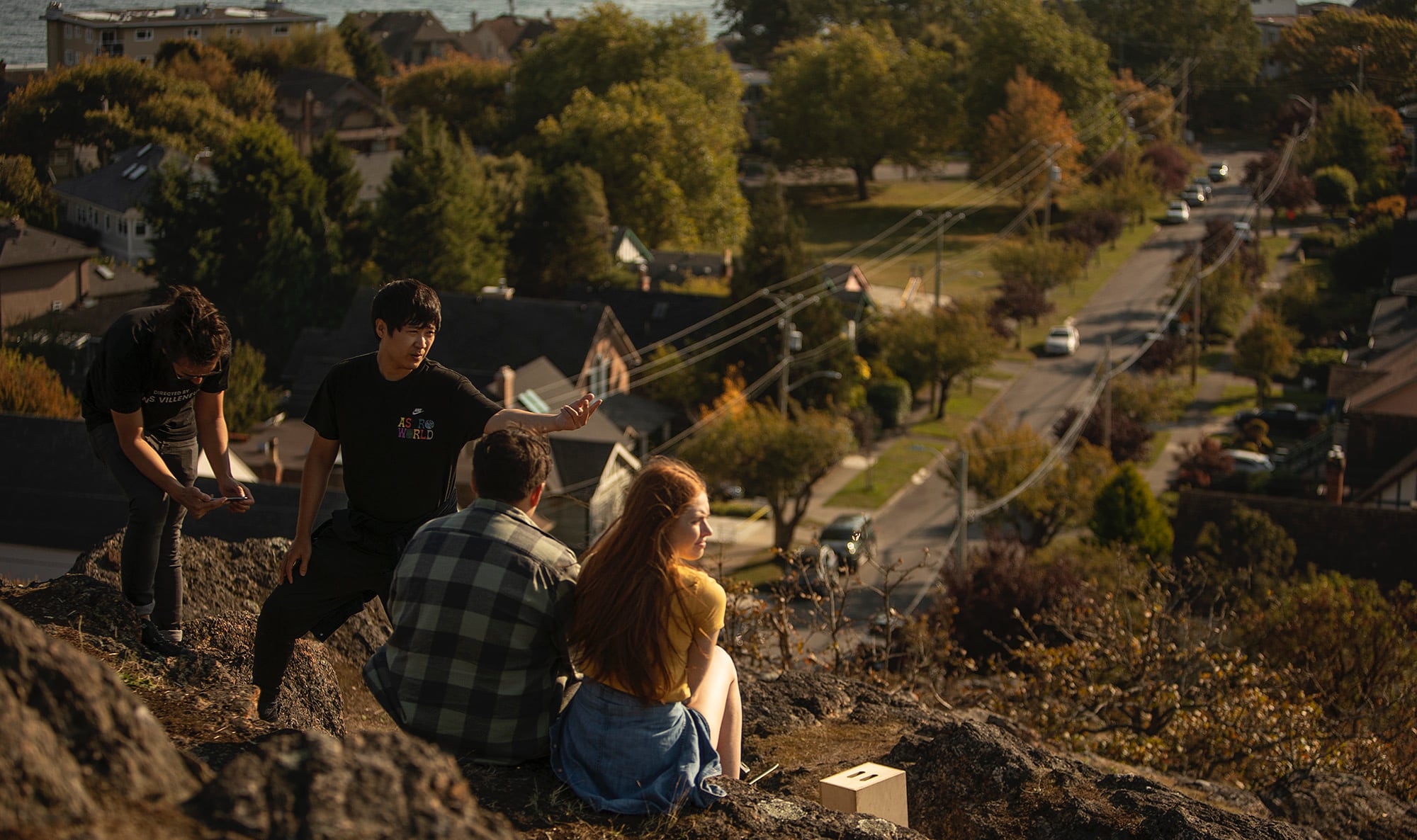


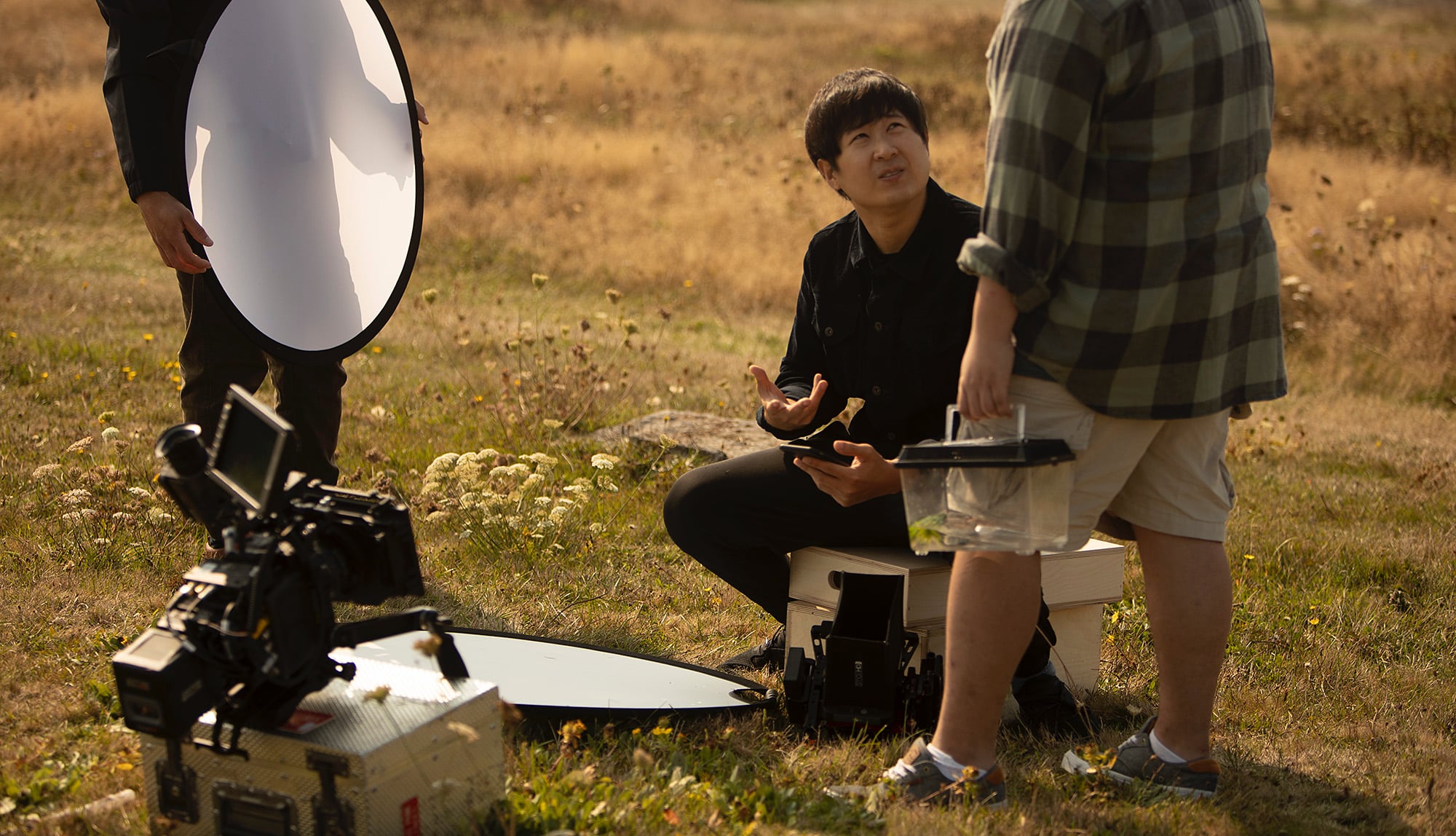

We had worked out a visual language for the film that informed a loose shot list that we would adapt to depending on the light or location. The forest scene was definitely the most meticulous in coordinating as it involved running and a tripping stunt. We didn’t want too many improvised surprises from the actors here to ensure safety. I recall the team having to constantly chase the daylight in the middle of shooting the scene as the light on that particular day didn’t want to cooperate – Jaryl was not happy with Mr. Sun.
The ending is a revelation and answer to what I imagine is the audience’s question as to why Ruben is so incredibly overprotective of his innocent-seeming pet turtle who he consistently refers to as his brother.
The gorgeous splash of surrealism and fantasy at the end speaks to the whole, almost dream-like, frequency of the film.
I adore films, which blend a world of reality and the surreal such as Ghibli films. My own films and cinematic style lends itself to exploring narratives with similar elements. I’m fascinated by mythology and other cultural stories pertaining to the strangeness in the world. The ending is a revelation and answer to what I imagine is the audience’s question as to why Ruben is so incredibly overprotective of his innocent-seeming pet turtle who he consistently refers to as his brother. The long journey of rehoming his brother in a more peaceful place comes to a poignant and magical conclusion which I hope leaves watchers thinking deeper after watching.

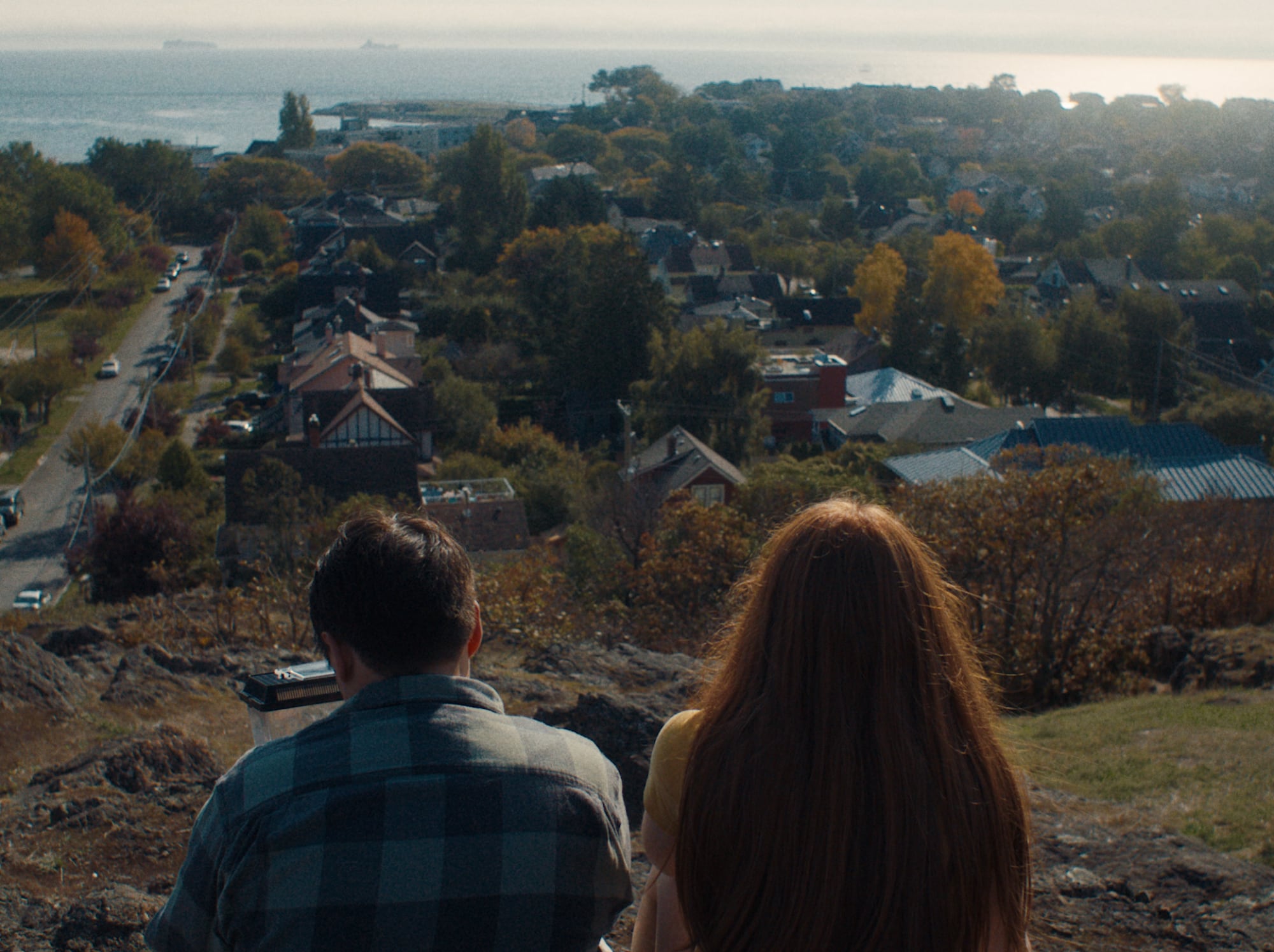
How did post production affect and mould the film as you didn’t go in with a strict plan?
Cutting our picture with editor Lawrence Le Lam was a long, arduous process as he had the tall task of needing to consider every take, which may have at random, included different dialogue, blocking, reactions, and sound without any guide or reports. It became a tedious task to craft a story directly correlated to a loose script, so we sculpted it first from whatever fit naturally and felt right. Additionally, I was reminded of the profound impact sound design can have on a film, as Noah Meyer’s brilliant work seamlessly filled any lingering empty spaces, further polishing the film. Our distance apart led to many lengthy and tedious online sessions going through the entire sound design process.
What do you have in the pipeline to come next?
I just finished post production on my first feature film, Mongrels, about an immigrant Korean family uprooting themselves in a Canadian prairieland, facing a wild dog infestation. I’m looking forward to taking it to film festivals this year and sharing it with diverse audiences. I’m also currently developing my second feature script.


